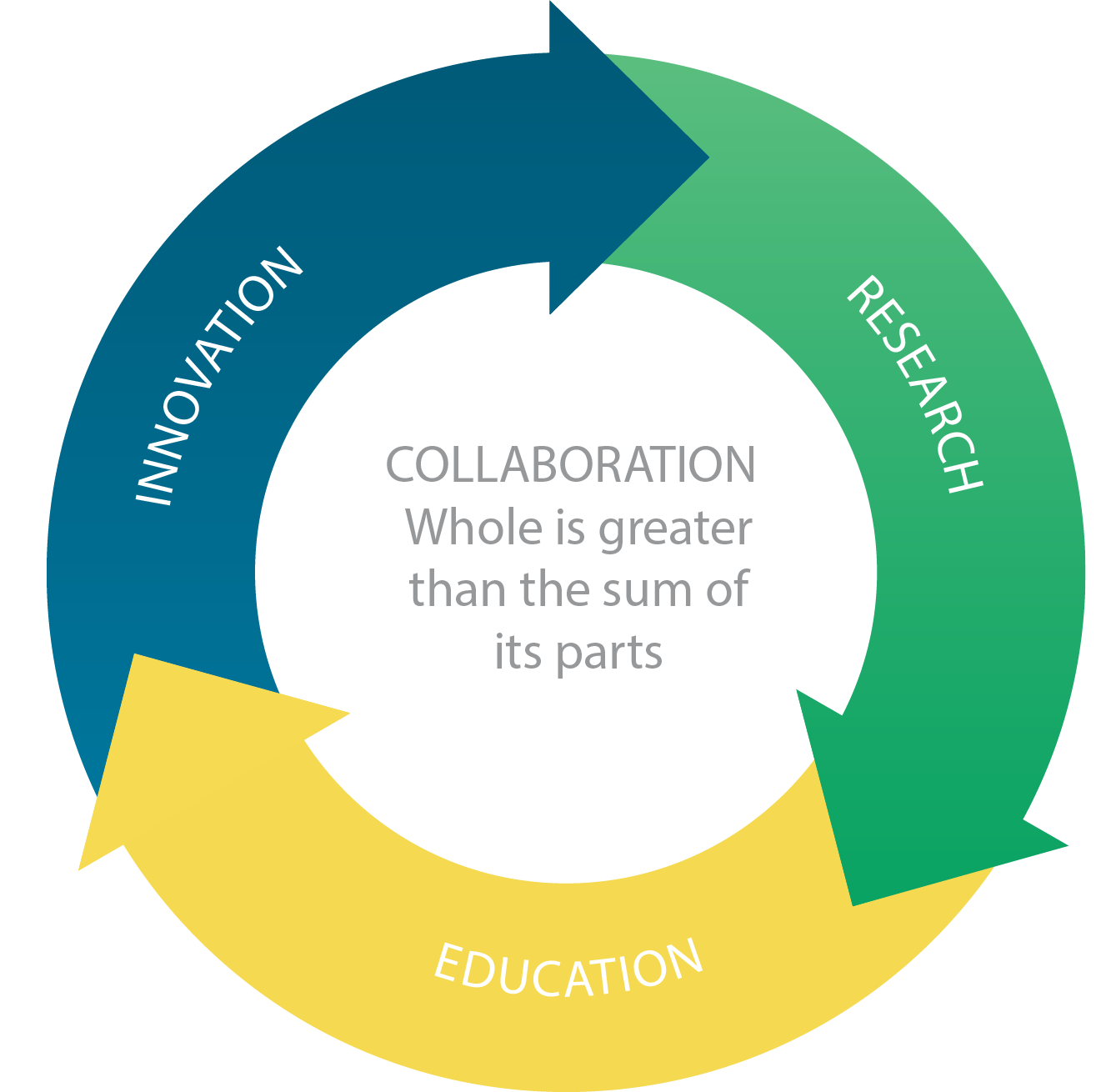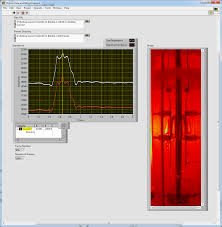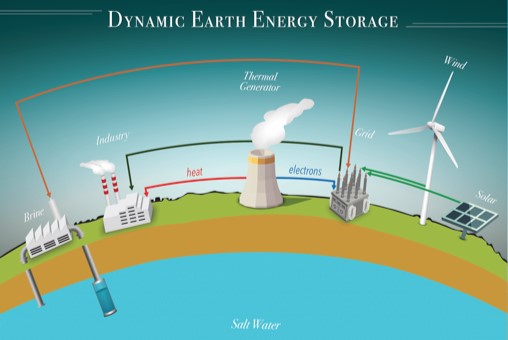OUR strategy
CAES is designed to harness the power of collaboration — from university students and faculty to INL researchers to industry partners — in order to address complex energy challenges. Working together, tackling challenges as a team, allows CAES to perform in ways that a single institution working alone cannot. The essence of that collaboration, and the reason for CAES' existence, is to strengthen the connections, exchanges, and resources of its members in order to inspire new ideas, approaches, and impacts.
The CAES Strategy is intended to guide us along that path. It is a living document that calls for focusing our collaborative efforts to better discover and bring to market approaches, technologies, and solutions that will have measurable and lasting impacts.
Focus Areas
CAES Strategic Pillars
Collaboration Inspiring Innovation and Impact
CAES is the collaboration that inspires innovation and impact by leveraging our collective capabilities to empower students, researchers, faculty, and industry to accelerate energy solutions.
Impacts
- Expand clean, resilient energy options
- Support national security mission
- Accelerate R&D through hubs, centers
- Grow the next generation of energy leaders
- Industry uptake of new technology
- Sustain talent pipeline
- Economic development

Research Pillar

CAES' collaborative research brings together the world-class capabilities, facilities, and expertise of its members. As a team, we develop viable new technologies, effective policy recommendations, and networks of subject-matter experts.
CAES' unique ability to connect researchers and streamline collaboration allows us to expand our effectiveness at the state, federal, and private-sector level. CAES grows by cultivating and aggregating capabilities in our Focus Areas to develop cutting-edge research collaboration, establish research hubs around energy-research challenges, and connect facilities and laboratories both physically and virtually, to accelerate productivity and the impact of advanced energy research.
Three critical outcomes will emerge from this effort:
Research Collaborative Ecosystem
This effort begins with one-on-one collaboration among researchers. CAES' ability to identify barriers and gaps, to establish tools and platforms, and to pilot joint funding pools allows us to create a thriving PI-to-PI collaborative environment. CAES enables this collaboration via initiatives such as the CAES Summer Visiting Faculty program, CAES Collaboration Fund, working groups, workshops, and roundtables. These efforts, and the joint proposals that emerge, lead to more opportunities for diversified funding for projects.
Collaborative Research Hubs
Collaborative research hubs emerge when one-on-one collaboration develops into research efforts involving multiple institutions. CAES provides support for these efforts in its Focus Areas (add link) by providing the structure, tools, and resources to build working groups.
By transitioning these one-on-one research efforts and individual projects, and recruiting internal and external partners into more complex projects and solutions, collaborative research hubs lead to additional funding opportunities.
Connected Research Environment
A connected research environment provides researchers with seamless access — virtual and physical — to CAES facilities and laboratories in Idaho Falls and at the universities. This outcome relies on early initiatives — streamlining key features such as access and training across facilities— and the development of a virtual CAES-connected campus.
Education Pillar
CAES Academy
CAES Academy is an educational community where everyone has access to a suite of expansive educational experiences. It is a construct for creating new joint educational offerings through the CAES universities, with INL support, to equip the workforce of tomorrow with the skills, experiences, and relationships needed to succeed. The concept calls for the CAES universities to serve as the accredited institutions empowered to confer degrees, certifications, and formal recognition of academic achievement, while CAES Academy serves as a vehicle for student development and success.
The success of CAES Academy relies on these critical outcomes:
Academic-Research-Industry Pipeline
This is an array of clearly defined opportunities designed to attract students to member universities and the region, simultaneously acquainting them with future employment opportunities at INL. Backed by workforce and skills development through targeted training, these efforts serve to build and retain valuable relationships and interactions, while creating opportunities for INL researchers to teach and mentor students.
Collaborative Research Hubs
Collaborative research hubs emerge when one-on-one collaboration develops into research efforts involving multiple institutions. CAES provides support for these efforts in its Focus Areas (add link) by providing the structure, tools, and resources to build working groups.
By transitioning these one-on-one research efforts and individual projects, and recruiting internal and external partners into more complex projects and solutions, collaborative research hubs lead to additional funding opportunities.
Mission-Aligned Professional Development and Training Center
This part of the education pillar provides a range of periodic and one-off user requested joint training opportunities to support INL, industry, and third-party needs in conjunction with community colleges, and the department of labor. In addition, CAES Research and Innovation pillars will be supported with targeted internal-facing offerings.
Innovation Pillar
This concept bolsters CAES' goals by increasing the available resources and collaboration points needed to enhance the value and utility of research and development and, ultimately, to achieve market impact.
The Innovation Pillar goals depend on the two critical outcomes:
Spin in/Up/Out/Start-up Ventures
CAES is building an energy-innovation district by creating a dynamic physical and intellectual space to ignite, build, and sustain a thriving entrepreneurial environment and culture. Efforts include providing education, curricula, resources, and teaming to prepare future and existing entrepreneurs with a cutting-edge advantage of both technical expertise and business acumen.
The energy innovation district is expected to enable easier access to a full suite of technical and business resources that are needed to turn ideas into businesses. Examples include mentorship programs, technical guidance and peer review, facility access, legal counsel, and opportunities to leverage regional entrepreneurship opportunities, networks, and initiatives.
Industrial point of entry
CAES will develop a more streamlined point-of-entry process for industry to access INL and member universities' capabilities, expertise, and facilities with the goal of meeting industry needs. CAES, together with industry groups and partners, will compile a menu of CAES resources that may contribute to bolstering existing business areas and developing entirely new business areas given ever-changing customer needs At the professional-development and industrial-knowledge levels, CAES associate-industry touchpoints through research, training and potential for embedding industry professionals directly into CAES entities serve to build the collaborative relationships that are the hallmark of CAES' success.



